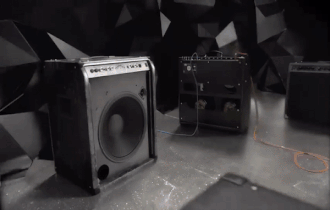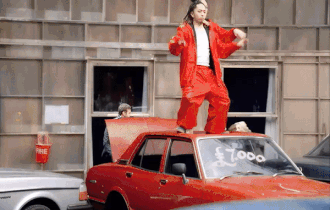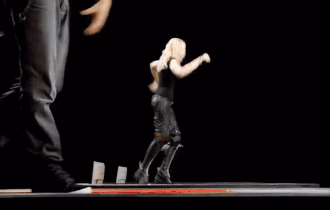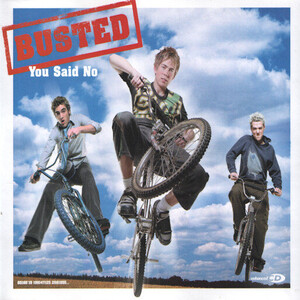Released: 21st April 2008
Writers: Madonna / Timothy Mosley / Justin Timberlake / Nate Hills
Peak position: #1
Chart run: 7-5-8-4-1-1-1-1-3-3-4-8-11-13-14-17-20-22-29-35-39-46-51-48-57-65-74
Billboard Hot 100 chart run: 68-3-3-7-6-4-6-7-7-8-10-10-15-22-28-31-44-54-60-69
For her eleventh studio album, Hard Candy, Madonna collaborated with some of the biggest writers and producers of the late ‘00s. However, choosing to follow musical trends rather than dictate them proved difficult for some fans and critics to swallow.

With the promotion of 2005’s Confessions On A Dancefloor – and its accompanying tour the following year – completed, Madonna began contemplating what direction the follow-up would take. Inspiration came not from an overriding concept or social commentary but simply the artists she was listening to and excited by at the time: Timbaland, Pharell Williams and Justin Timberlake. All three worked extensively with Madonna to create Hard Candy, which came to define it musically. The album primarily emulated chart trends of the late ‘00s rather than reinventing or subverting them. If that was the intention, it met the brief for better or worse.

Before Hard Candy was released, though, Madonna‘s career underwent a significant change. It was announced in 2007 that she’d signed with Live Nation, having been part of the Warner Bros. label since her debut in 1983. The ten-year “360” deal included the rights to all her music-related endeavours, from albums to touring, merchandising, sponsorship agreements and anything in between. At the time, this was championed as a groundbreaking move which would redefine the usual business model of record labels in an uncertain era where the physical market remained dominant, but sales were still plummeting. It is debatable how much that transpired to be true – and whether it ultimately benefitted Madonna. Nonetheless, before departing Warner Bros., she still owed one more studio album and a greatest hits collection. That led some fans to speculate (not unreasonably) if there may be a degree to which Hard Candy was simply seeing out her commitments. After all, would any artist – even Madonna – be motivated to try and create a seminal piece of work when it was part of their exit from a record deal…?

But there were, perhaps, other factors at play. While Confessions On A Dancefloor was a massive success, it became apparent during the campaign that American radio remained reluctant to play Madonna’s music. The singles were driven predominantly by strong digital sales but consistently suppressed by a lack of airplay (even Hung Up ‘only’ peaked at #7). Her label – Warner Bros – shifted their promotional strategy to target Adult Contemporary stations, hoping a hit there would create a route into other formats. But that didn’t work either. This wasn’t a new problem; Madonna made a pointed reference to the questionable acumen of radio playlisters on 2003’s Hollywood (“Music stations always play the same song, I’m bored with the concept of right and wrong”) and Confessions On A Dancefloor proved that entirely.

So, what better way to disrupt the status quo than to collaborate with acts whose material dominated radio during the previous few years? Timbaland co-wrote and produced much of Justin Timberlake’s FutureSex/LoveSounds album in 2006 (along with Nate “Danja” Hills), which yielded three #1 hits on the Billboard Hot 100. He also released his own album – Shock Value – in 2007 and topped the chart with Give It To Me, which featured Justin Timberlake and Nelly Furtado. Their considerable pull was likely to outweigh the pushback Madonna encountered, and on that basis, it’s easy to see Hard Candy as a cynical move. Perhaps that is indeed all it was. Nonetheless, there’s something satisfying about knowing radio executives – particularly in America – would be tying themselves in knots over how to navigate the situation of having to play Madonna’s music. And it would be naive to think she didn’t know that.

Choosing 4 Minutes as the lead single threw down the gauntlet. While this is a worthy lead single, it’s also built from the ground up with Justin Timberlake and Timbaland fully entwined. Although billed as featured artists, this is almost as much their song as it is Madonna’s, and that’s one of the criticisms often levelled at 4 Minutes. Furthermore, the dynamic feels slightly imbalanced because she’s joining an established partnership and adopting their sound. It’s feasible that the single could’ve been released with Timbaland and/or Justin Timberlake credited as the lead artist(s) instead, without needing to change the arrangement. Thus, some will always see 4 Minutes as a track that gave away too much of the spotlight.

The album version (which runs for just over four minutes, naturally) does little to disprove that perception since it’s 50 seconds until Madonna’s voice first appears. Before that, the intro consists of Timbaland repeating: “I’m outta time, and all I got is four minutes…four minutes, ay” atop a marching band beat with dramatic brass stabs and some idiosyncratic vocal tics (“Fikki fikki”). Even Justin Timberlake manages to sneak in a few words before the first verse: “Hey! Uh. C’mon. Madonna”. Where the extended intro works well is in grounding 4 Minutes with a sense of incoming cataclysmic urgency as the bass pounds against the speaker. It feels like something big is about to happen. The shorter radio edit doesn’t quite have the same gravitas. Still, reducing Timbaland’s contribution to a short series of utterances (“Ah. Yeah. Ha. Breakdown, c’mon”) does put the focus onto Madonna earlier. As much as there was ever going to be, at least.

4 Minutes quickly establishes that there’s no real lead on the track, regardless of who is credited as such. Instead, it’s constructed as a semi-flirtatious back-and-forth between Madonna: “I want somebody to speed it up for me, then take it down slow, there’s enough room for both…” and Justin Timberlake: “Well, I can handle that, you just gotta show me where it’s at, are you ready to go? Are you ready to go?” throughout. The tension between them is played in an occasionally suggestive but never overtly sexual manner. Even when singing together on the pre-chorus: “If you want it, you already got it, if you thought it, it better be what you want; if you feel it, it must be real just, say the word, and I’mma give you what you want”, it doesn’t come across that they’re directing the sentiment towards one another. And there’s no need to, either. When Madonna appeared on Me Against The Music with Britney Spears, the song and video played into a frisson between them following their 2003 VMAs performance. No such context existed with 4 Minutes, so the track sensibly doesn’t try to fake it.

Yet, there’s a palpable creative chemistry between Madonna and Justin Timberlake, which is electric when it works well. The refrain: “So keep it up, keep it up, don’t be a pri-hey-madonna, uh. You gotta get in line, hop! Tick-tock, tick-tock, tick-tock” is gently witty and has just the right amount of ego simmering between them. Meanwhile, the chorus itself: “Time is waiting. We only got four minutes to save the world. No hesitating, grab a boy. Then grab a girl. Time is waiting. We only got four minutes to save the world. No hesitating. We only got four minutes, huh, a-four minutes” uses the potent energy between Madonna and Justin Timberlake, setting it against a wall of dramatic backing vocals to great effect. The hooks are catchy, maybe not in an immediately quintessential way as tracks like Hung Up or SexyBack, but also never quite to the point where 4 Minutes feels glaringly less than the sum of its parts melodically. Despite the ominous grandeur of the production, there isn’t a profound message attached to the lyrics, either.

Like many high-profile collaborations, there would always be a weight of expectation upon 4 Minutes. As the lead single for a Madonna album and the coming together of three major artists, there are, undeniably, compromises to be had. However, taken instead as a booming, bombastic pop song – no more and no less – the end product is good. Elements of the entire package were, and remain, justifiably contentious to fans, but those are equally reasons why 4 Minutes crossed over and found an audience. Ultimately, despite ostensibly following the crowd, it still possesses a scale and boldness that eclipses many similar-sounding tracks because of Madonna; her presence cannot be quelled.

The music video adopts an apocalyptic, end-of-the-world theme where a geometric black void consumes everything in its path. Madonna and Justin Timberlake stay just ahead, moving through a series of locations that are enveloped behind them. There’s a deliberate superficiality about the framing so that even interior shots of a house and supermarket are visible studio sets lacking proper walls and ceilings. It’s stylised well – and looks suitably big budget – because of the way everything and everyone around Madonna and Justin Timberlake is continually disappearing. At one point, they pass through a bedroom where a couple are obliviously kissing on the bed and whose skin melts away to show their interior anatomy. Some sequences in the video use the looming peril effectively, like one that involves jumping over haphazardly parked cars (during which Justin Timberlake yanks Madonna onto one of the roofs in time with: “Grab a boy. Then grab a girl”), which has terrific dynamism. Others – such as a dance routine performed atop checkout conveyor belts – are amusingly absurd, but the concept and how it’s executed is consistently entertaining.

4 Minutes concludes in front of a giant countdown clock where Timbaland appeared at the start but has since disappeared (he wasn’t at the same shoot). Madonna and Justin Timberlake proceed to freestyle dance around one another, removing items of clothing (although again, not in a particularly sexual or even revealing way) until, eventually, the timer runs down, and they start to disintegrate into the void. The underlying narrative of time running out – and most people being completely unaware of what’s happening – complements the song and, in some respects, feels more astute as a commentary now than it did at the time. What the video does lack, though, is a distinctive look for Madonna that immediately and unmistakably represents the Hard Candy era. Even in a flesh-coloured outfit and knee-high boots, her appearance isn’t distinguishable as something that belongs specifically to this campaign. But perhaps this all feeds into the observations that some aspects of her persona were being toned down or traded off.

Amid the concern about Madonna seemingly chasing trends rather than setting them, it’s easy to overlook that 4 Minutes was a genuinely big hit in the UK. The track debuted at #7 on digital sales alone and floated around the top ten for a month. A physical release followed, but the song actually climbed to #1 the day before the CD single became available. It remained there for four weeks (equalling Into The Groove and Vogue) and sold 430,000 copies to end 2008 as the ninth biggest seller of the year. That total is now more than 630,000, with the inclusion of streaming, which puts 4 Minutes comfortably amongst Madonna’s biggest hits (with the caveat, of course, that direct comparisons are of little value when it involves singles spanning decades and multiple fluctuations in the market).

In America, 4 Minutes entered the Billboard Hot 100 at #68 on airplay alone before climbing to a peak of #3 the following week after a digital release, making it Madonna’s highest charting single since Music reached #1 in 2000. While radio was not quite so receptive to the track as it had been to Justin Timberlake and Timbaland’s recent material, the response was still a marked improvement for Madonna. 4 Minutes picked up broader radio support (including Latin Pop and Rhythmic) while also performing better on most formats than anything from Confessions On A Dancefloor had. Tellingly, though, while the track opened doors for Madonna, things didn’t stay that way for long; the next single, Give It 2 Me, spent one week on the Billboard Hot 100. The frustrating thing is that suggests a lot of airplay for 4 Minutes came in spite of Madonna, not because of her, and she was perhaps regarded – by some – as the more expendable part of the track. That should never have been the case, even notionally, on her own single.

Though met with mixed reviews, Hard Candy was heavily – and creatively – promoted. Warner Bros embraced a new era of music consumption by reaching agreements for the album to be preloaded on Sony Ericsson phones in some countries, while Vodafone customers could listen to the album early in others. It also premiered on MySpace four days before the official release date. Yet, the momentum from Confessions On A Dancefloor alone – not to mention Madonna’s sizeable fanbase – meant Hard Candy was more or less assured of a strong opening week. The album debuted at #1 in most major territories, including the UK and America. It didn’t have the same longevity as its predecessor, though. In part, that’s because the Sticky & Sweet Tour – the first under Madonna’s new Live Nation deal – launched four months later. That decision was lucrative (it remains her highest-grossing tour) but left the campaign front-loaded.

One thing Hard Candy has in common with most other albums in Madonna’s back catalogue is that its legacy is impossible to define categorically. Few fans are likely to claim this as her best work, and while some remain resolute in their dislike, there are still great tracks (Give It 2 Me, Devil Wouldn’t Recognize You, Voices) that save it from being a total write-off. Thus, the strength of feeling either way towards Hard Candy may largely be dictated by the residual nostalgia for this era of music. However, 4 Minutes is much easier to define, for it remains Madonna’s last major global hit. She’s had top ten singles since – even in America – but none has permeated public consciousness and the charts simultaneously in quite the same way.



